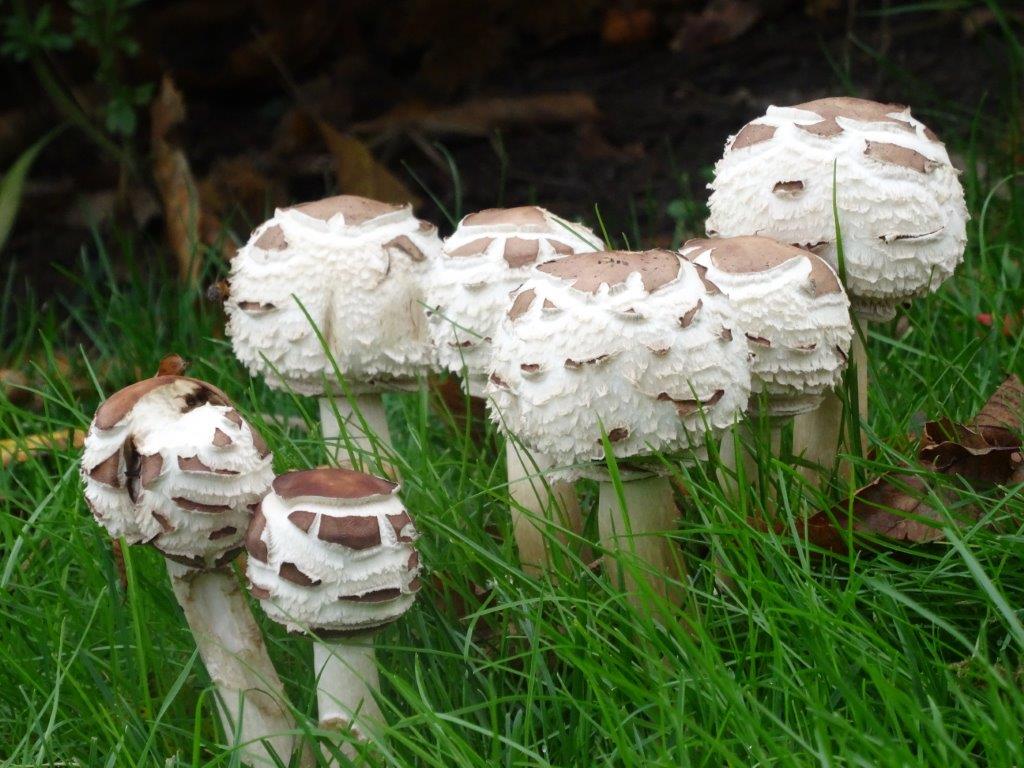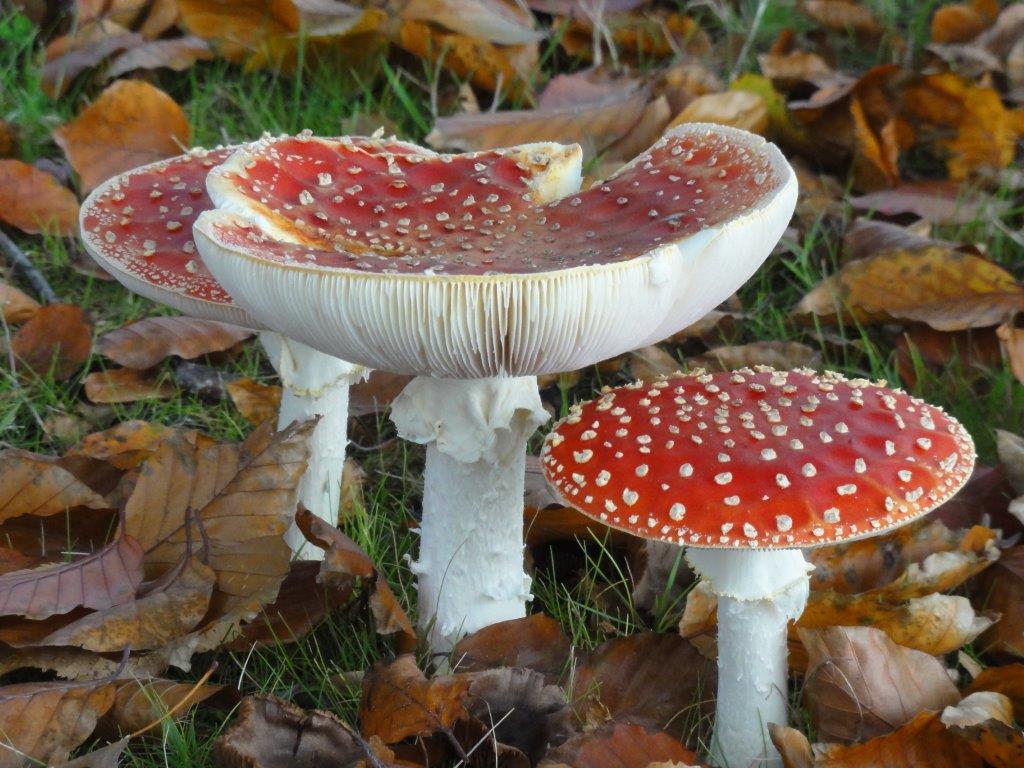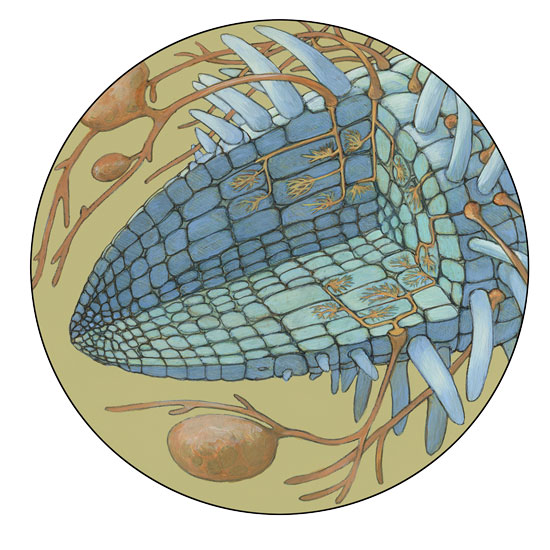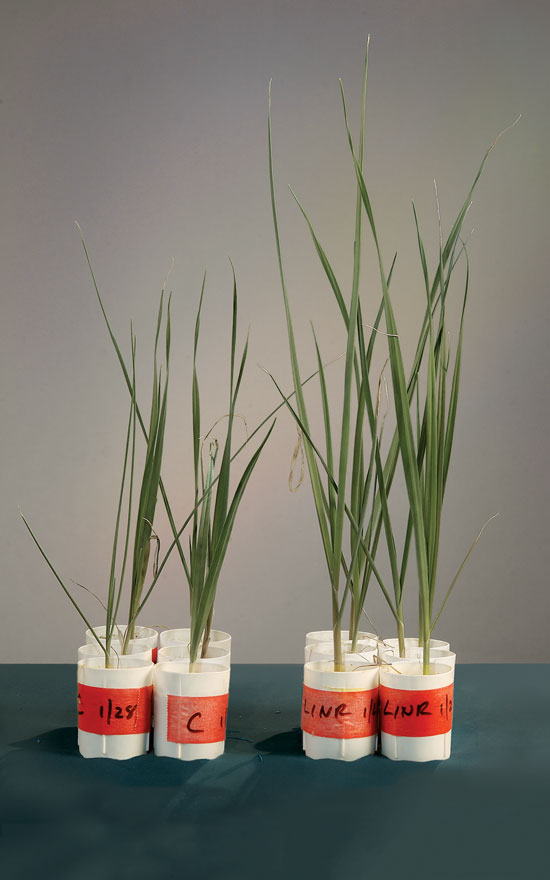Better growing results with mycorrizhae
Micorrhizal fungi help to grow healthy plants and better crops. Roots cannot eat and drink from the soil. They cooperate with micorrhizae to do this.
Mother Earth News gave us permission to publish one of the best articles ever written about mycorrhizal fungi. It is written by one of world’s leading micorrhizae specialists, Mr. Douglas H. Chadwick.
Throughout history, people’s explanations of life involved all kinds of wonderful stories and complex philosophies. Facts just weren’t really in the mix. That began to change with the rise of science. Scientific momentum picked up sharply during the 16th and 17th centuries. As scholars scrambled to collect and categorize exotic beasts and botanical wonders, they dreamed of piecing together a full portrait of nature. Then, eyeglass lens-makers in the Netherlands assembled the first high-powered microscopes, and scientists looked closer at a few items that were right in front of them: soil, old bread and drops of muddy water. The world they had been trying to make sense of for so long suddenly seemed ten, a hundred, a thousand times more intricate, strange and beautiful — alive in more ways than anybody could have ever imagined.
The Microscopic World of Beneficial Microbes
We still define natural habitats primarily in terms of plants and animals, the two kingdoms of life we can see with unaided eyes. The greatest amount of biological activity and the largest diversity of species and genes, however, come from the other four kingdoms science now recognizes: bacteria, archaea (a less-studied division of life-forms formerly considered bacteria), protists (mostly single-celled algae and protozoans), and fungi. The vast majority of these members are microscopic in size. They cannot be seen with the naked eye, but we now know they permeate soils and suffuse waters. They drift en masse through air. They thrive not only on the surface of every plant and animal, but within them as well. From the upper reaches of the atmosphere to the bottom of the seas, down into the rock layers and outnumbering the stars in the known universe, microbes are literally the creatures that make Earth a living planet.
Microbes remain mostly in the “out of sight, out of mind” category of nature for a lot of folks. Others, chemical spray in hand, can hardly stop thinking about them, envisioning “germs,” mold spores and other unseen swarmers poised to unleash disease and rot. Either way, a broader understanding of the life-forms that truly put the “bio” in “biosphere” has been slow to emerge. Interest is building, though, as the public learns more about the positive roles microorganisms play, including how some types can boost yields in gardens. These mycorrhizae — extraordinary fungi that interact with our garden crops — are what we’ll be zooming in on.

Behind the Scenes With Beneficial Fungi
I’m a wildlife biologist. Decades ago, I visited a team working to restore streamsides churned to bare gravel by placer mining. They were planting willow and alder in hopes of stabilizing the banks and preventing further erosion. Other vegetation could then move in and once again shade the passing waters, cooling them for native trout and spawning salmon. I was already picturing songbirds returning to nest in the lush foliage while mink, otters, and bears patrolled the shores, except the normally hardy willow and alder wouldn’t grow. They withered instead, and the banks stayed empty — until the team prepared the next batch to be planted by first soaking their roots in a broth containing certain fungi. This is common practice today. It wasn’t then. Besides changing the way I’ve planted trees at home ever since, the visit made me realize that my view of the most important wildlife in ecosystems might be upside-down.
What is called a mushroom is merely the temporary structure some fungi grow to produce spores. The main body of a fungus typically consists of a network of fine-branching threads known as “hyphae.” While you’ll sometimes see them massed together, spread like a web across a decomposing log, they’re usually hidden underground and essentially invisible to us; the individual filaments are only a single cell wide. The network of fungal hyphae is called a “mycelium.” As it turns out, the largest known creature on Earth is neither a blue whale nor a redwood tree; it’s the several-hundred-ton mycelium of one humongous fungus that’s between 2,000 and 8,000 years old. Spread across 4 square miles of Oregon’s Blue Mountains, the fungal network grows at an average depth of only a few feet. By contrast, the mycelia of most species are small, but they’re as common as, well, dirt. If you pick up a pinch of soil almost anywhere, you’ll have miles of hyphae in your hand.
Estimates for the number of fungi species run in the millions. Mycologists have identified close to 100,000 so far. Of those, nearly 6,000 interact with plants’ roots. These are roughly divided into two types: those in which the fungus remains outside the root’s cells (ectomycorrhizal fungi) and those that penetrate the root’s cells (endomycorrhizal fungi, illustrated in the photos at the bottom of the page). The outcome in both cases is a continual exchange of goods. Ten to 20 percent of the sugars a plant produces through photosynthesis are absorbed by the mycorrhizae. In return, the fungus delivers many essential nutrients to the plant and increases drought resistance. Higher crop yields can be the result for gardeners. As the ends of the hyphae weave among soil particles via cracks and crannies too small for even the narrowest root hair, the mycelium becomes an auxiliary root system that’s in contact with a subterranean volume of soil from several hundred to 2,500 times greater than what the plant could reach alone.
Plants routinely face a challenge absorbing enough of certain key elements, such as phosphorus, nitrogen, potassium and iron. Fungi don’t face this obstacle; they produce specialized acids and enzymes that break the bonds that bind those nutrients to soil and organic compounds. Although we call this process “decay” and attach a morbid aura to the word, it’s a lively enterprise. Gardeners recognize this decomposition from their compost piles. It’s no surprise that a plant with hundreds, if not thousands, of miles of hyphae working on the plant’s behalf to mine key nutrients and freight them back to the roots is able to grow faster, stay healthier, and ultimately yield more than it would without the fungi’s partnership.
Plant Partners: How Mycelium Increases Plants' Nutrient Uptake
Polish scientist Franciszek Kamienski gets credit for discovering in the 1880s that the fungus and plant combination was in fact a symbiosis — a mutually beneficial partnership. A contemporary gave it the name “mycorrhiza,” which is Latin for fungus-root. Don’t get freaked out by the Latin. Just say it with me: my-core-rise-uh. The plural is mycorrhizae: rise-A.
At least 90 percent of all plant families are known to partner with mycorrhizal fungi. These associations can be between a single fungus species and a single plant species, but most plants associate with many species of fungi, and vice versa. Mycorrhizae are by no means considered the exception any longer. They rule. Mycorrhizae, not plant roots, are the principal structures for most nutrient uptake in the plant kingdom.
The first plants that colonized land some 400 to 500 million years ago were descendants of aquatic algae. According to fossil evidence, symbioses with fungi appeared shortly afterward. Some think they had already formed before the proto-plants even left the water. Either way, mycorrhizae would have greatly improved early plants’ chances of adapting to the stresses imposed by the harsher and less predictable environments encountered on shore, especially since those plants hadn’t really developed roots yet. In a sense, helping plants cope with the demands of life on land is what mycorrhizae have been doing ever since.
Although we think of fungi being most at home in deep, dank forests, they’re surprisingly abundant in open shrublands and prairies, too. The outer walls of hyphae contain gluey compounds that cause fine particles of earth to clump together on and around the threads. This process is a major factor in building soil structure and making the ground less vulnerable to erosion. Mycelial networks also play a valuable role in sequestering carbon within microclusters of filaments. They limit their partner plants’ exposure to heavy metals, such as lead, zinc and cadmium, by keeping those elements bound to the hyphae’s sticky sheath. At high latitudes and high altitudes, mycorrhizal fungi scrounge nutrients from cold, rocky soils. In boggy regions, the hyphae buffer plant partners from the high acid content of peaty soils. In saline ground, the hyphae help safeguard their partners from high salt concentrations. Mycorrhizae can also protect plants from pests and diseases.
To learn more about the structure and evolution of mycorrhizal fungi, plus its symbiotic relationship with plants, lichens and humans, see Mycorrhizal Fungi and Plant Roots: A Symbiotic Relationship.

Mushrooms from mycorrizas - Amanita muscaria – (common name Fly Amanita)
Mycorrhizal Fungi in the Garden
How can a gardener take advantage of this symbiotic relationship that plants and fungi have been developing for 400 million years? Microbiologist David Douds of the USDA’s Agricultural Research Service has been studying that question for 35 years. His studies show that fungal inoculants can increase the yields of many vegetable and field crops, including leeks, peppers, potatoes, strawberries, sweet potatoes and tomatoes (see the photos at the bottom of the page).
Inoculants can give transplants a strong start, but the main key to raising good crops lies in maintaining healthy communities of native mycorrhizal fungi in the ground itself. Douds cautions against heavy or frequent tilling and the use of chemical fertilizers (especially phosphorus) and soil-applied fungicides. These activities break apart, weaken or otherwise suppress beneficial microbes, including fungal mycelia. You can keep your soil in prime condition by minimizing disturbances apart from occasional light tilling, weeding and mulching.
How to Use Cover Crops and Other Techniques to Increase Beneficial Fungi Populations
An equally important step is to ensure that mycorrhizal fungi survive through winter and early spring. The kinds of mycorrhizal fungi that support many garden crops aren’t capable of living and reproducing independently of their plant partners. In a carefully weeded and fully harvested garden, mycorrhizal fungi numbers can decline for lack of live roots to colonize. Douds advises avoiding empty beds by keeping plants, whether food crops or cover crops growing at all times. (See The Best Summer Cover Crops for ideas.) In fall, plant rye, oats or, Douds’ favorite, hairy vetch. All of these plants have extensive root systems and readily harbor mycorrhizae. Rows of perennial onions and strawberries can also serve as reservoirs for overwintering fungi. Orchards don’t require the same attention, but buffer strips of a grass-and-legume blend will help retain a mix of fungi.
Douds sows hairy vetch in September while his garden is still producing, targeting areas where the soil is accessible, such as under and around tomato plants. The following year — usually late May when the hairy vetch is in full flower — he chops the shoots and lets them lie on the soil’s surface. Wait until the hairy vetch is in full flower; cut it too soon and it will re-sprout as a “weed,” but cut it too late and it will produce seeds, which can be problematic. Douds then transplants his tomatoes, peppers and other vegetables into the hairy vetch mulch.
Since learning about mycorrhizae’s reliance on live plants for winter survival, Mother’s Editor-in-Chief, Cheryl Long, has grown a thin strip of perennial alfalfa along the edges of her garden paths. “It doesn’t take up growing space, and during summer I cut it for protein-rich poultry feed,” Long says.
Many gardeners know that over-fertilization can be harmful, but they may not be aware that phosphorus builds up in soil more readily than the other two elements in common fertilizer mixes (nitrogen and potassium). Under a regimen of frequent, well-intended application, phosphorus can reach levels that actually discourage the formation of mycorrhizae. Phosphorus is the middle number of the N-P-K percentages shown on fertilizer products. Choose low “P” numbers unless a soil test has shown your soil is low in phosphorus.
Learning a New Way
Now that scientists have taught us that invisible, magical mycorrhizae are in the soil, minimal tilling and constant cover crops should be considered a routine part of growing good crops. If you want to take extra steps in spring to help your crops establish these remarkable plant-fungi partnerships, Douds, in cooperation with the Rodale Institute, has developed a technique you can use to grow your own fungal inoculum to give your transplants a head start at the very beginning of their lives. For details, visit the Rodale Institute.
When gardening or farming with mycorrhizae in mind, there are a couple of things you don’t need to worry about. The first, Douds points out, is that you don’t need to inoculate your established garden soil with beneficial fungi. If the soil has had plant cover and hasn’t been abused, it will already have the fungi present. The second non-worry is what would be best for beets, spinach and most members of the mustard family, which includes broccoli, Brussels sprouts, cauliflower, collard greens, kale and radishes. These are among the relatively few plants that get along fine without fungi for partners.
How to Promote the Plant-Mycorrhizae Partnership
Minimize soil tilling
- Always keep live plants in your beds, even in winter
- Rotate crops within your beds
- Avoid pesticides and chemical fertilizers
- Avoid applying too much phosphorus; a soil test every few years is a good idea
Wildlife biologist, author, and longtime contributor to National Geographic, Douglas H. Chadwick has spent much of his career among wild animals — very big wild animals. Yet ever since receiving his first microscope as a child, he has been equally fascinated by miniscule life-forms.

A white fungal network called hyphae, not plant roots, is the principal structure for the uptake of many important nutriens in the plant kingdom.

The hyphae of mycorrhizal fungi are only a single cell wide, and they penetrate a root’s cell wall to facilitate nutrient exchanges between the fungi and the root tip. This illustration is magnified about 200 times.

Leeks inoculated with mycorrhizal fungi (right) grow much better than those planted without an inoculant (left).















